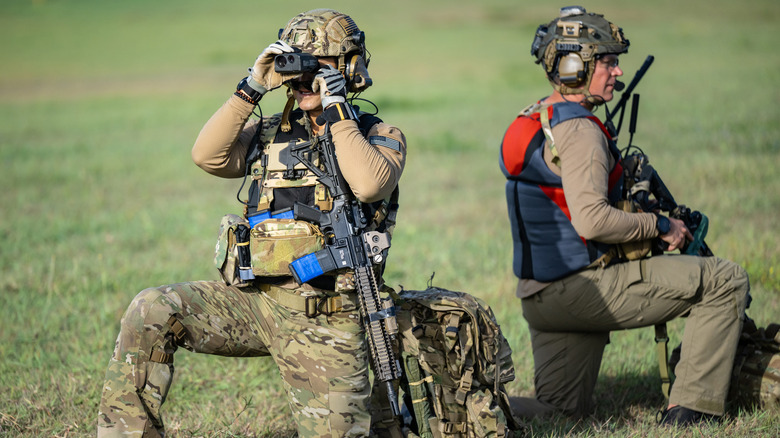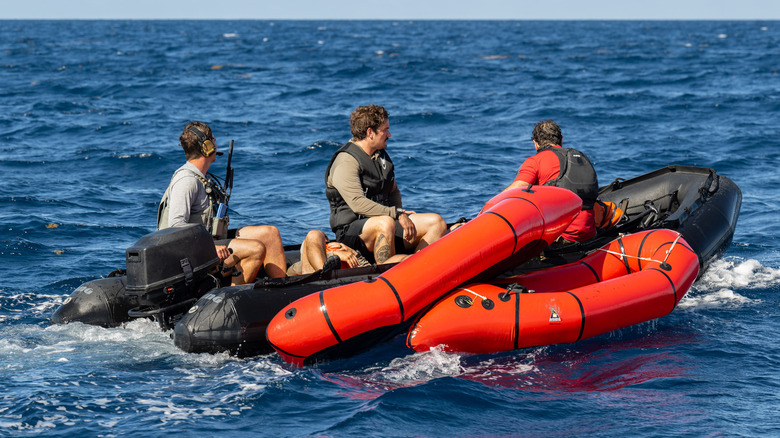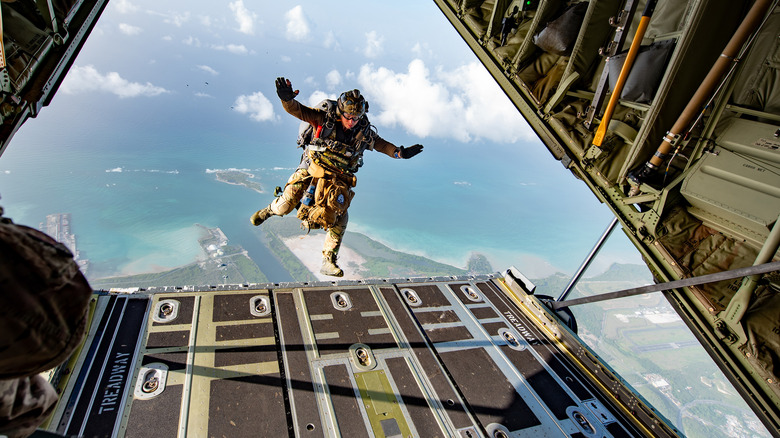Here's How Air Force Special Ops Troops Practice Seizing An Airfield
Airports are military targets of immense strategic importance. We only need to cast our eyes back a few years to see a prime example of this. At the start of the Ukraine war, the original Russian objective was to capture Kyiv within a few days. A major part of this plan required the taking of Hostomel Airport. This would allow them to pour troops and equipment into the area and swiftly take control of the city. Ultimately, although the Russians captured the airport, Ukrainian troops and artillery units prevented its intended use.
While we're not here to deride the Russian troops that failed to achieve the objective, it does illustrate the importance of training and practice in such circumstances. This was most recently demonstrated by special tactical units from the Kentucky Air National Guard's 123rd Airlift Wing. In August 2025, they took part in such a training exercise as part of the large-scale Emerald Warrior 25.2 exercise, which was partially based in the Caribbean.
During this exercise, the troops took part in a practice drill that used Henry E. Rohlsen Airport on the Island of St. Croix, in the U.S. Virgin Islands, as the target. The exercise involved parachuting troops directly onto the airfield, while another group approached the island by sea. Once at their objective, the troops joined forces to seize the airport and clear the way for a propeller-driven Hercules C-130J to land with further equipment.
Training to seize an airfield
Seizing an airport is more than just rushing a runway and a control tower and hoping for the best — it's a highly coordinated exercise that relies on elite troops and precision planning. In the exercise on St. Croix, the two teams consisted of six special tactics airmen, 11 pararescuemen, and combat controllers. The team of six parachuted into the sea and boarded an inflatable boat to hit the airport from the sea. As they motored towards the island, the second team parachuted directly onto the airfield. Once they linked up, the teams secured the airfield and prepared the way for the arrival of the Hercules with further equipment. The choreography required to synchronize these elements shows just how much planning is behind what might look like a straightforward assault.
Of course, as the failed Russian exercise in Kyiv demonstrated, taking the airport is just the first step. Getting it to work for you is another matter. Once the assault simulation was over and aided by the US Coast Guard, the special ops team took part in further operations from the "captured" airfield. These included using Mississippi Army National Guard Black Hawk helicopters to ferry them to other islands for infiltration missions, reconnaissance missions, search and rescue missions, and dealing with disasters like mass casualty situations.
Staying awake - seizing the Wake Island airfield
The importance of training in the military cannot be overstated, nor is it something that can be performed on a "train and forget" basis. A point demonstrated by the fact that this is not the first such exercise the Air Force special ops troops have undertaken. For example, in August 2016, Special Tactics Airmen combined with Marine Force Reconnaissance to form what's known as a jump team. Parachuting from 13,000 feet from an MC-130J Commando II 13 (the MC-130J is a modified special forces version of the Hercules C-130), the troops jumped onto an uncontrolled and unmarked drop zone on the little island. Once landed, the troops were tasked with seizing the airfield and then providing air traffic control to guide an MC-130J onto the airfield.
The choice of Wake Island for this operation wasn't accidental. The island's isolated position meant troops had to operate without the usual network of support. It also helped to teach the entire force about what coordination was required for all the involved units to work together efficiently. Just as on St.Croix, the mission was about rehearsing realistic scenarios that, if they ever occur in combat situations, are potential pivot points on which the success and failure of whole campaigns could hinge. We only need to look back at the failed Russian assault on Hostomel Airport to see the ramifications of the failure of such missions. Incidentally, the latter operation also saw the destruction of the largest plane ever built.


